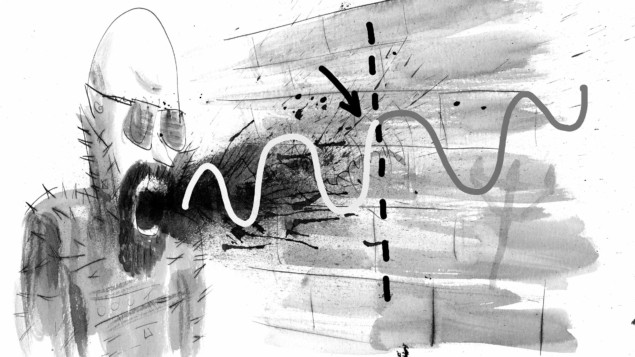Achintya Rao reviews When the Uncertainty Principle Goes to 11: Or How to Explain Quantum Physics with Heavy Metal by Philip Moriarty

The intimate relationship between music and physics – beyond that of mere longitudinal waves – provides a sound basis for an introduction to scientific phenomena. In When the Uncertainty Principle Goes to 11: or How to Explain Quantum Physics with Heavy Metal, author Philip Moriarty seeks to explain the microscopic world of quantum physics through the amplifier of heavy metal. Picture Jean-Baptiste Joseph Fourier – he of Fourier transform and analysis fame – in tight leather trousers, with even wilder hair than his portraits suggest, wielding an “axe” and performing to thousands of screaming fans. The result is a book that teaches as much about heavy-metal genre history to a physicist as it teaches physics to a metalhead. Beware though that a casual read will prove inadequate to fully appreciate the book’s contents, as it delves into some very heavy topics.
Moriarty’s passion for both subjects is evident in his writing and, from his contribution to YouTube channels like Sixty Symbols, it is clear that he is no stranger to making dense physics intelligible to non-experts. As someone with limited listening history when it comes to this particular kind of music, I found that Moriarty, a physicist at the University of Nottingham in the UK, assumes no genre expertise from his reader. Instead, he provides helpful examples and abundant footnotes to ease one in to the realm of guitar shredding and mosh pits.

When the Uncertainty Principle Goes to 11 – complemented by artist and animator Pete McPartlan’s beautiful sketches (see top and above) – starts off on familiar ground, with an introduction to concepts such as volume (the amplitude of a sound wave) and pitch (its frequency). This then leads into Fourier analysis, energy conversion, crowd dynamics and quantum physics. Indeed, Moriarty states early on that the book will not shy away from technical and involved discussions about physics. This means that, although not a textbook, the book does contain explanations that need more than a single read to fully comprehend them – you may find yourself going back and forth a lot to properly grasp each topic. It also includes several equations and graphs that take some effort to digest, especially if you are unfamiliar with physics notations.
The reader should bear in mind that, while it uses music as a narrative tool, When the Uncertainty Principle Goes to 11 remains a book about physics. Heavy metal does not, however, feature as a gimmick alone. Each topic gets examined using terms and situations that metalheads would be acquainted with. A detailed appendix allows the reader to continue their journey should they wish to, but I will admit to not spending too much time going over the specifics contained there.
Through the use of music, Moriarty takes his readers from the infinitely large stage of the whole universe and its very origins, to the infinitesimally small performances of individual subatomic particles. The aforementioned Fourier makes his presence felt regularly, which is unsurprising given his many contributions to physics. But if you were expecting a treatise on quantum physics alone, you might leave with a sensation similar to one after a concert that did not live up to its full promise; quantum physics just does not get as much attention as one would expect from the book’s title and premise. This is entirely understandable when you recognize that Moriarty takes the reader on a journey through a lot of other physics over the course of the book in order to be able to begin a discussion on the quantum world. But in what he does cover, Moriarty devotes several pages to debunking the pseudoscience and “woo” peddled by those who co-opt terminology from quantum physics to make seemingly profound statements about one’s place in the universe.
Despite its technical treatment, the book offers plenty of “interactivity” in the form of YouTube videos of song snippets mentioned in the text or audio samples of the experiments conducted by the author. In fact, the book has an accompanying YouTube channel dedicated to these sound samples. Although viewing the videos involves lots of putting down the book and typing on a computer, they prove invaluable in understanding the physics Moriarty covers.
Moriarty also turns up the nostalgia factor to 11. The writing is full of whimsical references to metal bands of yore and their albums, while song names and lyrics are used for chapter titles or epigraphs as well as section headings. He succeeds in resonating with the reader throughout the book, but some might find the musical meanderings in the writing a little too forced. From personal experience, the Venn diagram of physics aficionados and metalheads has a large overlapping area. Indeed, When the Uncertainty Principle Goes to 11 seems to be written as much for the author himself as it is for the seemingly tiny slice of the metalhead subculture who are as-yet-uninterested in physics. That said, if you are a heavy-metal connoisseur who has been just a little too afraid to peer into the technical depths of quantum physics, you will find that Moriarty’s book, full of familiar contexts references, strikes the right note.
- 2018 BenBella Books 352pp £11.34pb



